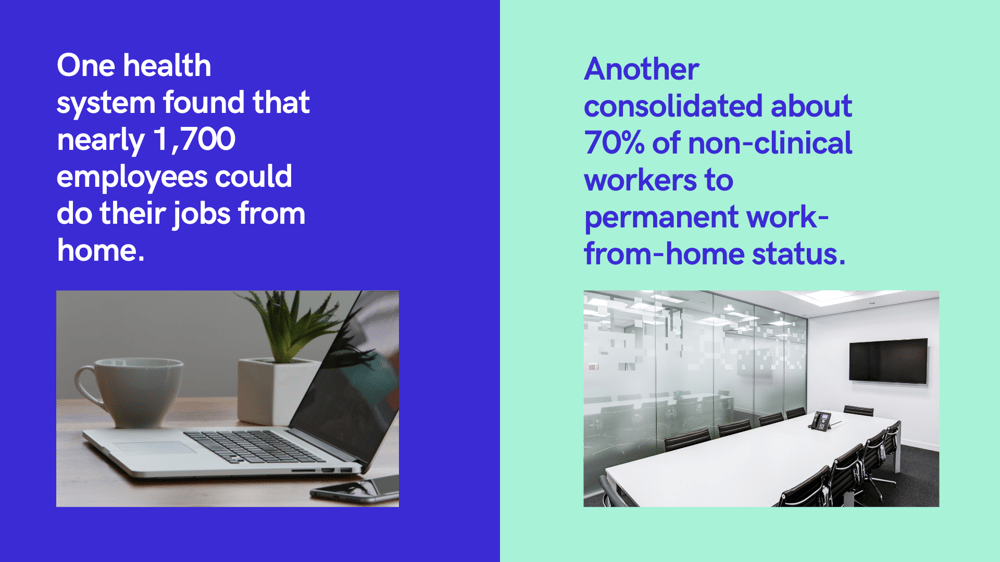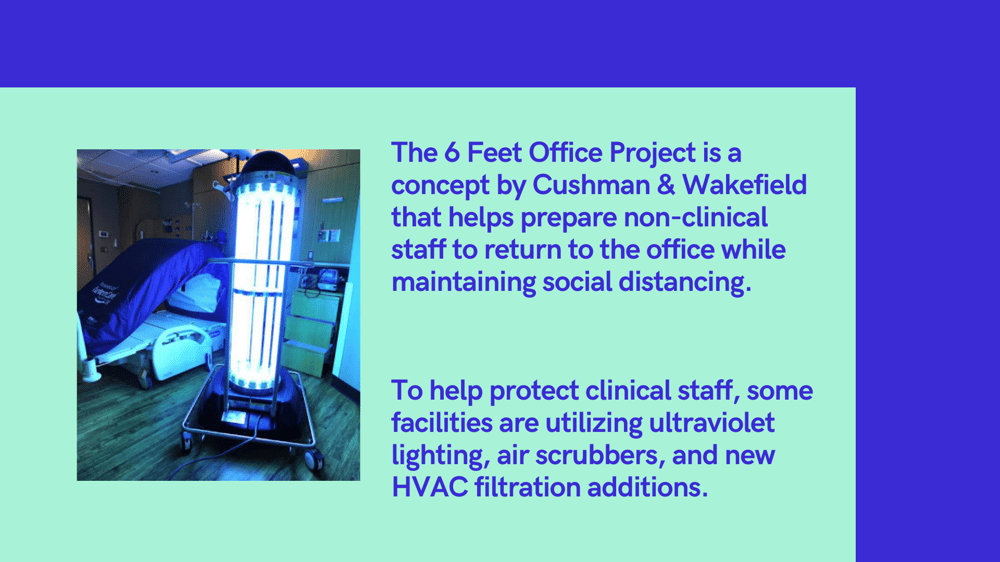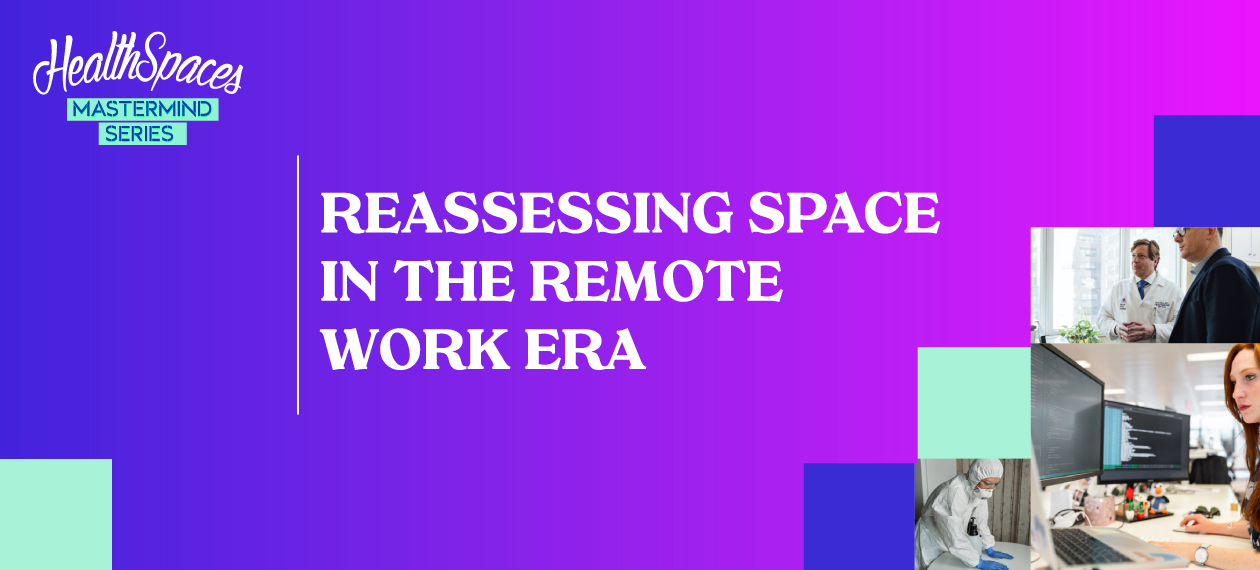Focus: Reassessing Space in the Remote Work Era
2020 has accelerated the shift to remote working. Healthcare systems are reassessing their real estate and facilities strategies, anticipating an immediate future with more people working from home while also anticipating a partial, if not full, return to the office in time.
Findings:
While many envisioned a remote workforce for only a few months, the reality is that returning to an office may not be happening anytime soon, if ever, for some staff.
More Permanent Work-From-Home
Through surveys and interviews with managers and other leaders, many found it unnecessary for some employees to return to the office, transitioning much of their staff to work-from-home on a more permanent basis.
 |
What to Do With All That Space
“You have to be intentional. This is a commitment the organization needs to make long-term, then they can rationalize the footprint." - Rob Moss, SVP of Healthcare at ERDMAN
ERDMAN has worked with several clients to map out their plans for the future, and suggest that organizations consider the long-term viability of work-from-home mandates before making permanent decisions regarding their space and real estate.
- One health system is considering the consolidation of offices and practices and offloading leases for newly vacant space.
- Another was already consolidating clinical practices prior to COVID-19 and has continued to do so, getting out of nearly $9 million in third-party leases.
- Others are consolidating non-clinical office space by balancing soon-to-expire leases.
Eliminating Offices
Though many departments are now working remotely, others continue to maintain their individual office spaces, making buildings a patchwork of in-use and vacant.
In an effort to recapture valuable space that could be consolidated or repurposed, some facilities leaders are incentivizing employees who "double-dip" with office space at home and in the system's office buildings.
 |
Creating Touchdown Spaces
There is still a need for space to work when dropping in for meetings and other tasks. With that in mind, many facilities leaders have turned to technology to address the accessibility and safety of communal working spaces.
- One health system investigated several software programs for hoteling across six locations, covering 250 seats for 1,000 people.
- They wanted a program that was able to map the layout of the space, provide single sign-on, had a mobile app, utilize reports for space usage, and have Outlook calendar integration.
- They chose RobinPowered, which integrates with services like Microsoft Office, has interactive maps of workspaces, and allows employees to reserve a space to work in advance.
- Another health system is using iOffice, which offers similar resources as RobinPowered.
- The program also connects to the company's keycards, creating a record of who entered and exited the building when.
Utilizing Technology for Safety
Through programs like RobinPowered and iOffice, employers can keep tabs on where their employees are working while in their respective buildings.
In the case of a COVID-19 outbreak, the organization can easily access records and reports to see who was exposed and which spaces should be subjected to deeper cleaning procedures.
Creating Flexible Spaces
With some healthcare systems decreasing their overall footprints, they are looking to get more out of their remaining spaces using flexible fixtures.
DIRTT has created partitions that can be used in patient areas as well as workspaces. The space inside the partition can house networking, electric, and other needed elements. The partitions can be used to transform any space into a conference room or used for telehealth visits. Some facilities are also converting current patient rooms to be multi-use.
“By equipping the rooms with fold-down desks and chairs, it can be used for telehealth, charting, or a workspace for a non-clinician.” – Chris Burke, Healthcare Director at DIRTT
Other Safety Measures
Several facilities leaders noted the challenges they have faced when it comes to equipping spaces to maintain social distancing and other safety-focused interventions between coworkers.
 |
Roundtable Participants:
Andrew Burkhardt - AVP, Research and Administrative Facilities - MD Anderson
Chris Burke - Healthcare Director - DIRTT
Nancy Hanright - Sr. Director, Real Estate & Space Planning- Boston Medical Center Health System
Gaurav Khadse- AVP, Facilities Portfolio Management - UTMB Health
Karen Langstaff - Chief Planning Officer - St. Joseph's Healthcare
Rob Moss - SVP, Healthcare - ERDMAN
Keith Neely - VP, Facility Operations - UT Medical Center
Chuck Rice - AVP, Construction Project Controls- WellStar Health
Doug Spies - Sr. Director, Architecture & Engineering - UPMC
Charis Trost - Director, Planning, Design & Construction - Mercy

Posted by
Collaborate with your Peers!
HealthSpaces is a community for people that plan, design, build and operate spaces where healthcare is delivered.
June 7-9, 2026 | Braselton, GA
Learn More




-4.png)
-Dec-09-2025-05-48-44-4379-PM.png)
-4.png)
-1.png)
-2.png)

Comments